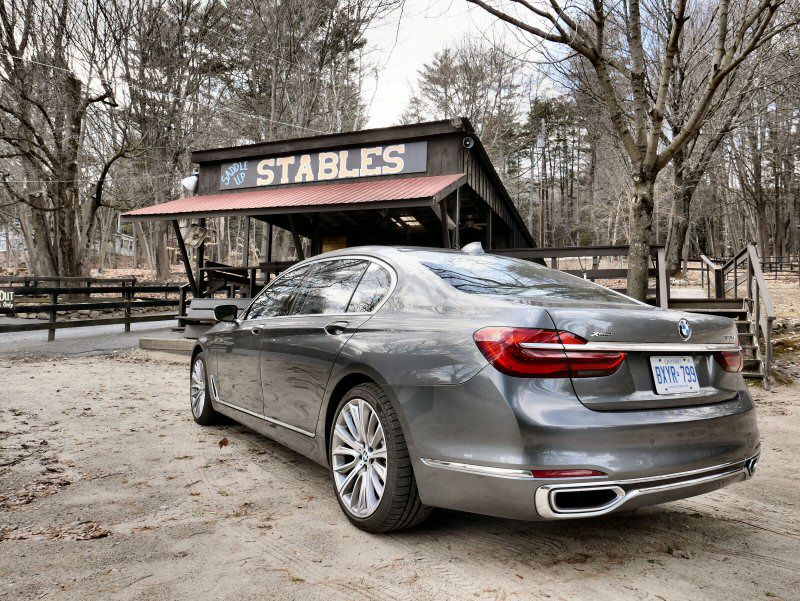Recent Articles
Popular Makes
Body Types
2016 BMW 7 Series Road Test and Review
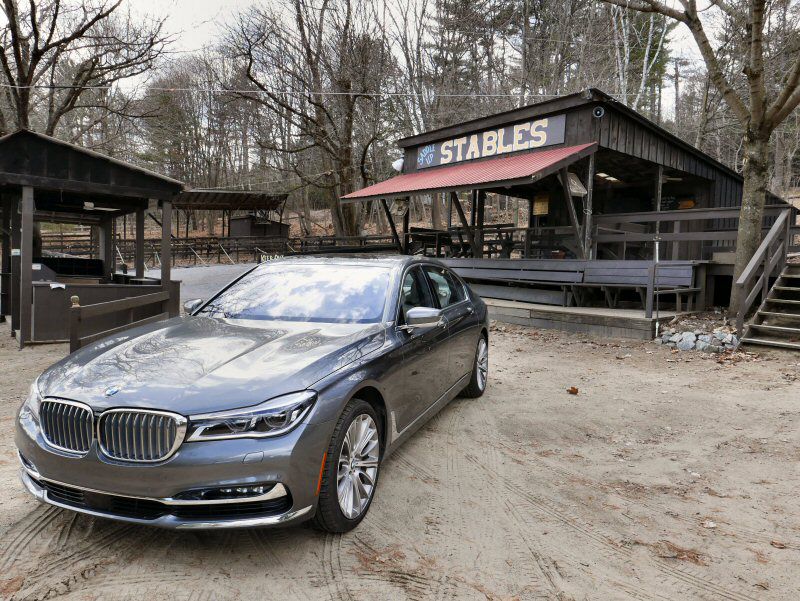
2016 BMW 750i xDrive Front Three Quarter
The 2016 BMW 7 Series has been completely redesigned for the current model year, which means that the brand's 750i xDrive flagship is the most advanced full-size sedan that has ever been offered by the German automaker. You can't really draw a straight line from the first 7 Series to the all-new edition of the car, however, as in recent years BMW has taken a detour from its previously driver-focused path and blurred the lines somewhat between what makes the 750i unique when compared against the class-leading Mercedes-Benz S-Class.
Nowhere is this more on display than inside the 2016 BMW 750i xDrive's passenger compartment, which boasts more screens than your local Best Buy and enough artificial intelligence willing to lend a hand behind the wheel that you could conceivably pilot the entire vehicle from the rear seat using a pair of broomsticks. Still, after a thousand-mile road trip through New York state that saw the 750i xDrive tackling a broad spectrum of roads, driving conditions, and even dreaded NYC traffic, it became clear to me that while BMW might not have built the best executive sedan on the market, it has certainly orchestrated an exceptional automobile by way of conducting a symphony of next-generation technologies.
Less Anonymous Than Before
The 2016 BMW 750i xDrive has moved on from the "one sausage, three different lengths" philosophy that has for years muddied the styling of the brand's larger sedans. Whereas differentiating between the previous-generation 7 Series and the somewhat smaller, more affordable 5 Series was difficult at a distance and at times challenging even from across the street, it's much harder for the redesigned 750i to suffer from a similar case of mistaken identity. A lot of the credit goes to the revised front and rear fascias that come with the new 7 Series, what with the broader snout, more prominent grille, and LED-accented headlights at the bow of the luxury ship and the updated tail lights and exhaust surround trailing at the stern. Even in profile the 750i is more easily picked out of a line-up, and some of the older model's distracting elements—such as the air vent on the front fender—have been minimized.
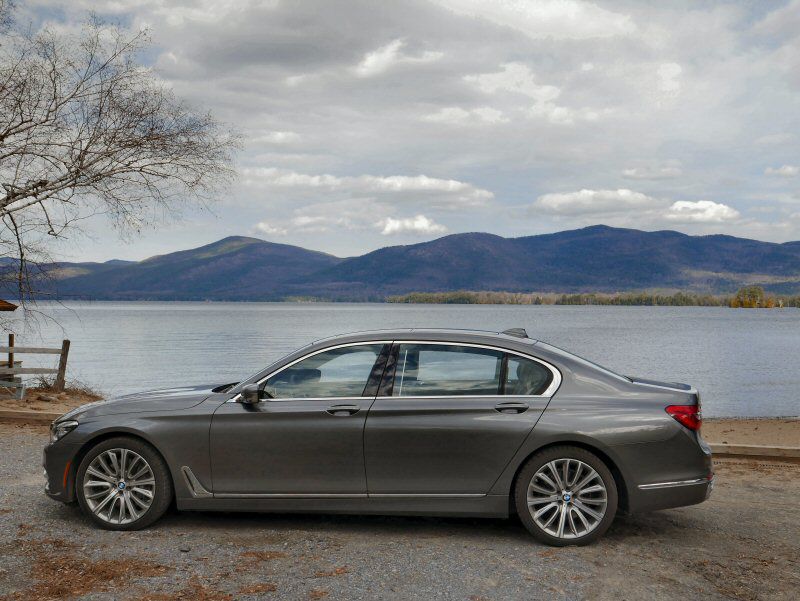
Switchgear Detracts From The Premium Experience
If only the 2016 BMW 750i xDrive's cabin exhibited the same restrained elegance as its sheet metal. I can split my evaluation for the 7 Series' passenger compartment into two distinct perspectives. On the one hand I can appreciate the effort made to select only the softest leather for the vehicle's highly supportive seats, dual-door (and extremely shallow) center console, and door cards. I also liked the contrasting brown and cream color scheme of the vehicle I drove, and the prominent, yet well-integrated iDrive screen perched on the dashboard.
Where I felt that the 7 Series let me down was almost every time I had to touch a button. The small cluster of climate and infotainment controls located under the main dash vents features a series of chrome-covered flat switches that surround a tiny horizontal LCD screen, which displays cabin temperature and offers heated and cooled seat controls. Every single one of these chrome plates felt cheap to the touch, and didn't look much better—the kind of hardware you'd find on a mid-level home stereo, not a range-topping luxury car. The steering wheel buttons and unusual font choices on the tiny climate screen compounded my perception that the control surfaces simply didn't match the esthetic or quality of the rest of the BMW's design. It's an unusual oversight for such an advanced vehicle, and it's one that didn't endear itself to me over time.
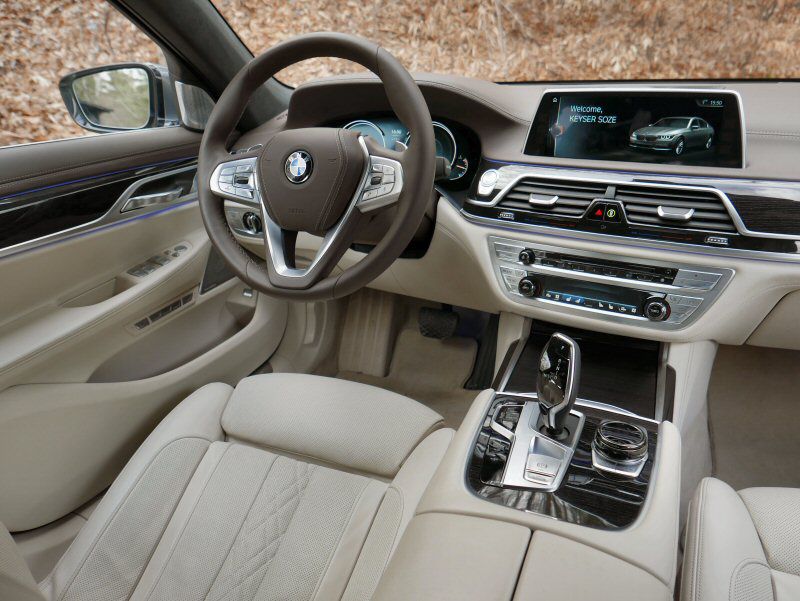
Absolutely Enormous Rear Seat
Much of this dichotomy can be explained by the fact that the 2016 BMW 750i xDrive is intended to be best enjoyed from the rear quarters. This was especially true in the version of the vehicle I drove, which was outfitted with the Rear Seat Executive Lounge Seating package. All 7 Series models sold in the United States for 2016 feature the vehicle's long wheelbase chassis, and the Executive Lounge setup takes full advantage by allowing the right rear rider to fold the front passenger bucket all the way forward, extend a small ottoman, and sink the seatback to the point where they are almost completely stretched out.
It's hard to overstate how indulgent these accommodations feel. A companion who had earlier in our drive complained about how unimpressed he was with the 750i's forward cabin completely changed his tune after he had spent 30 miles decompressing his six-foot, four-inch frame in the back of the car. Surrounded by dual iDrive screens (offering a subset of the front controls), ambient LED lighting that strikes a relaxing mood at night, and featuring a console-mounted tablet in the back that provides control over the entire decadent setup, it's hard to feel anything other than pampered in the rear of the BMW.
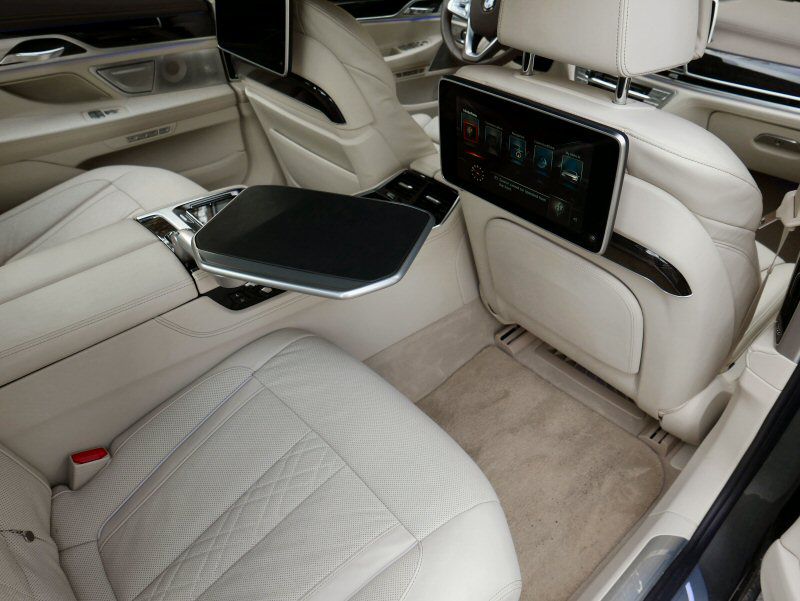
Driving Experience Is Good, Riding Experience Is Better
Of course, drivers aren't completely left out of the loop by the 2016 BMW 750i xDrive. Numerous paeans to comfort in the sedan's redesigned structure have also improved the 750i's experience behind the wheel, starting with the use of carbon fiber throughout the platform in order to reduce weight to a manageable 4,400 lbs. Next up is the decision to make air suspension standard front and rear, and to pair it with the option of a predictive suspension system that can monitor the road ahead and adjust damper response accordingly. The 7 Series also offers rear steering and adaptive swaybars for the first time in an all-wheel drive BMW.
The net effect is a car that excels when eating up mile after mile of endless highway, but which doesn't completely lose its composure should you decide to test its mettle on twisting two-lane asphalt. I preferred to keep the car in Comfort mode, as I found Sport to be simply too eager for the eight-speed automatic transmission to hold onto lower gears, and Adaptive not adept enough at planning ahead for the given driving scenario. Comfort+, normally my go-to drive mode on big BMWs, felt detached to the point of being frightening, and so I avoided it for the duration of my journey, which I emerged from at either end feeling far fresher than I expected.
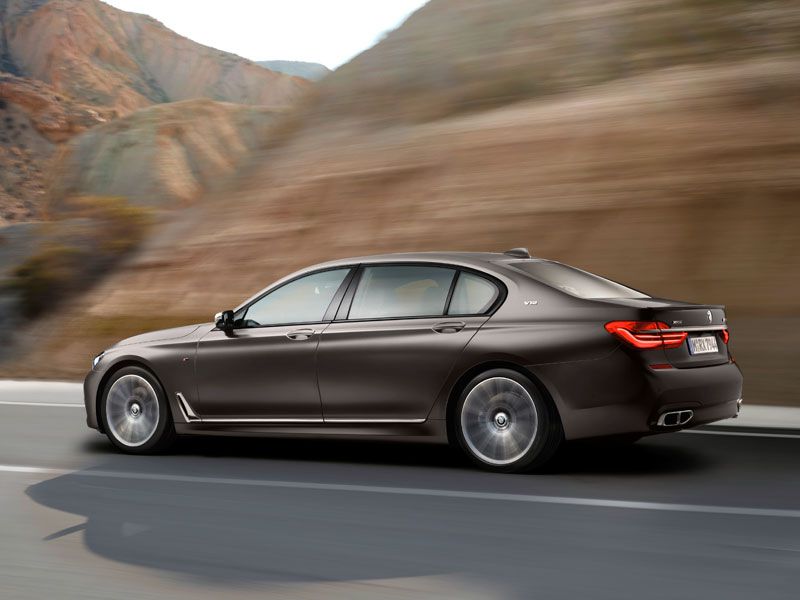
Photo by BMW Media
Two Flavors Under The Hood
The 2016 BMW 7 Series starts out in 740i trim (MSRP $81,300), which comes standard with a new 3.0-liter inline six-cylinder engine that has been turbocharged to produce 320 horsepower and 330 lb-ft of torque. It's a modest boost over the previous-generation turbo six, but the revised family of motors that the 740i dips into is more about overall efficiency than blazing speed, with the car delivering 21 mpg in city driving and 29 mpg on the highway.
If you want all-wheel drive, you're going to have to pay a substantial premium to jump into the 750i xDrive model (MSRP $97,400), as that's the only way to get it. Of course, xDrive isn't the sole advantage that comes with dropping an extra $16k, as you also benefit from a carry-over turbocharged 4.4-liter V-8 that is good for 445 horsepower and 480 lb-ft of torque. Fuel mileage drops substantially with the bigger engine, to 16 mpg around town and 25 mpg on the highway, with my own testing landing me somewhere in between those two figures over the course of my road trip.
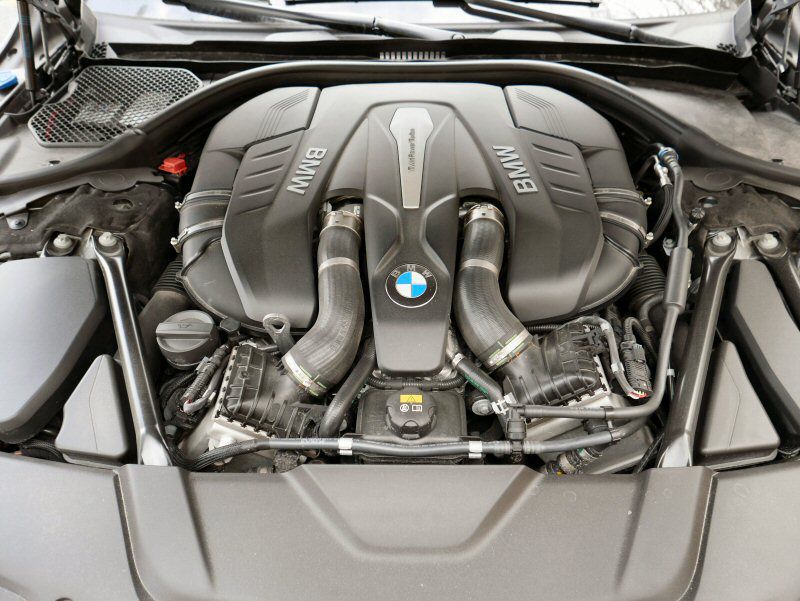
Loaded With Safety Tech
In addition to the consumer-oriented add-ons like the rear seat tablet, the 2016 BMW 750i xDrive that I drove also offered a few more practical technological innovations. The vehicle's adaptive cruise control system was of course capable of keeping up with the 85-mph pace of I-89, but it was also well-suited to the more glacial rate of forward progress that I encountered during New York City's rush hour. Aiding and abetting my detachment from the actual driving experience was a lane departure mitigation system that actively nudged the car back into the lane when it judge that I was straying too far off-target, and a self-driving feature—accessible via a button on the steering wheel—that could actually handle all of the cornering duties regardless of how involved things might get.
In fact, the 750i xDrive allowed roughly 15 seconds of hands-free motoring before it scolded me and required that I at least touch the wheel with a finger or two to re-establish that I was still, in fact, breathing. I wouldn't say that BMW's drive assistant is as advanced as the follow-along cruise control in the Mercedes-Benz S-Class, but at the very least it didn't suddenly leap out of its lane like a dog after a rabbit while creeping through traffic like the S550 did in my care.
BMW has also improved its parking camera system by way of an extremely high-resolution top-down aerial view of the car, which is displayed on the iDrive panel at low speeds or when the vehicle detects a nearby obstacle. It's quite useful—and stunningly detailed—and I'm sure it saved the sedan from more than a few valet scratches.
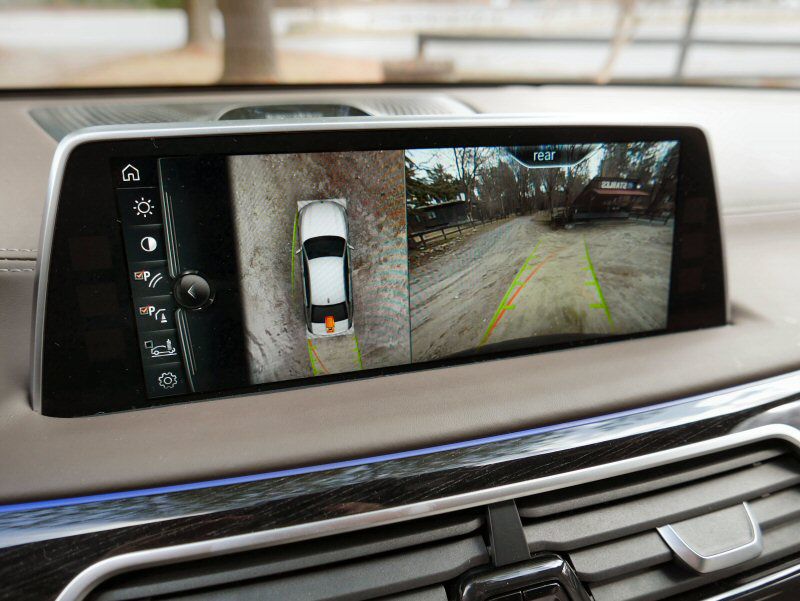
Gesture Control Is A Gimmick, But Touchscreen Is Welcome
BMW has elected to stop fighting the future and installed a touchscreen version of its iDrive infotainment system in the 2016 BMW 7 Series. It's a welcome addition, especially when combined with the character recognition built into the touchpad on the back of the rotary iDrive dial. Less impressive was the fact that voice commands simply refused to work the entire time I drove the car, locking me out of inputting navigation destinations or any other functionality unless I manually interacted with the system.
When I say "manual," I mean more than just tapping the screen and spinning the dial. BMW has introduced something called "Gesture Control" in the 750i xDrive that interprets hand movements made in the space in front of the iDrive screen. I'm not sure who decided this was a good idea—in what world is it easier to flap your hand than it is to simply reach out and touch a button or a screen?—but in actual practice it's irritating at best. I lost count of the number of times I accidentally muted the music I was rocking out to with an ill-placed fist pump, until I eventually learned that BMW would prefer me to enjoy my tunes in a perfectly still and rigid manner.
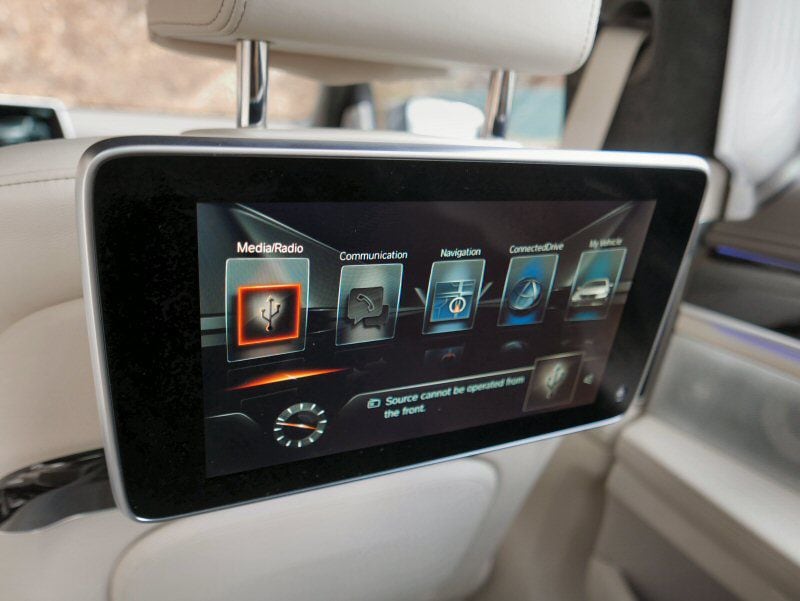
No Longer The Clear Driver's Car Choice
As I mentioned earlier on, there was once a time when the BMW 7 Series prioritized driver engagement to offer an experience behind the wheel that belied the size of the sedan. The 2016 BMW 750i xDrive isn't quite as capable of distinguishing itself from the rest of the big luxury car stable when driven in anger. To be honest, there's little about the 750i xDrive that invites spirited driving in the same way as the Jaguar XJ L, for example. This isn't necessarily a knock against the 7 Series, but it does indicate that priorities have changed for the Bavarian builder. The 750i xDrive is loaded to the gills with all the trappings of modern luxury, but in the pursuit of plush it's left some of its original character behind.
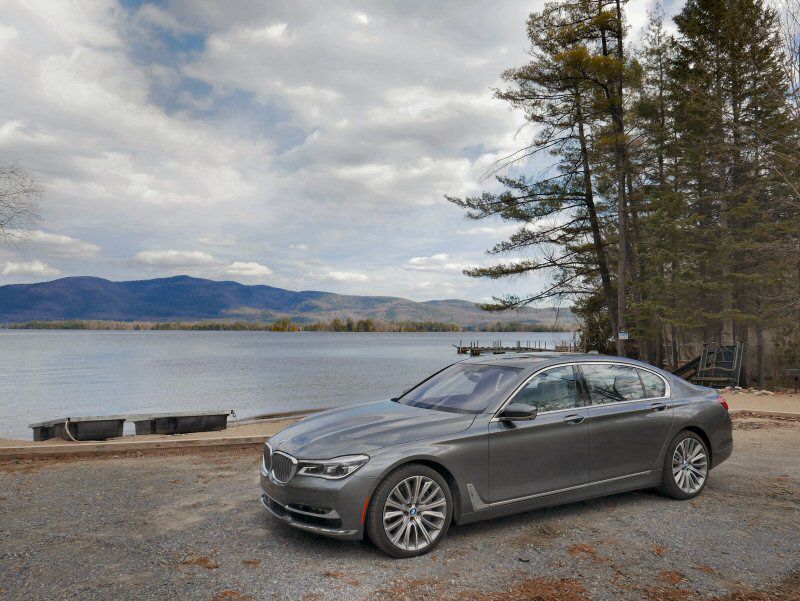
2016 BMW 7 Series Pros / Cons
: • Extremely comfortable • More engaging styling than the previous generation car • Decadent rear seat accommodations when properly equipped • Advanced driving and safety technologies are available • iDrive finally gets a touchscreen • Power is good from the turbocharged V-8 : • No longer really a driver's car • Switchgear feels cheaper than the 750i xDrive's window sticker would indicate • Gesture Control is a frustrating gimmick • No all-wheel drive for 740i models
